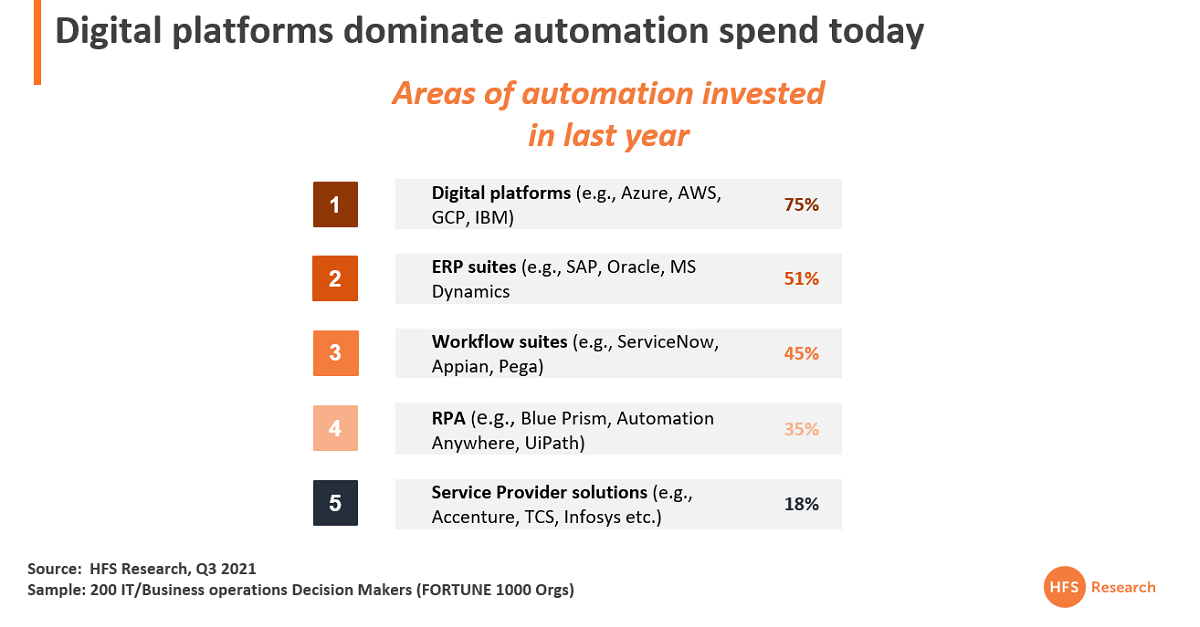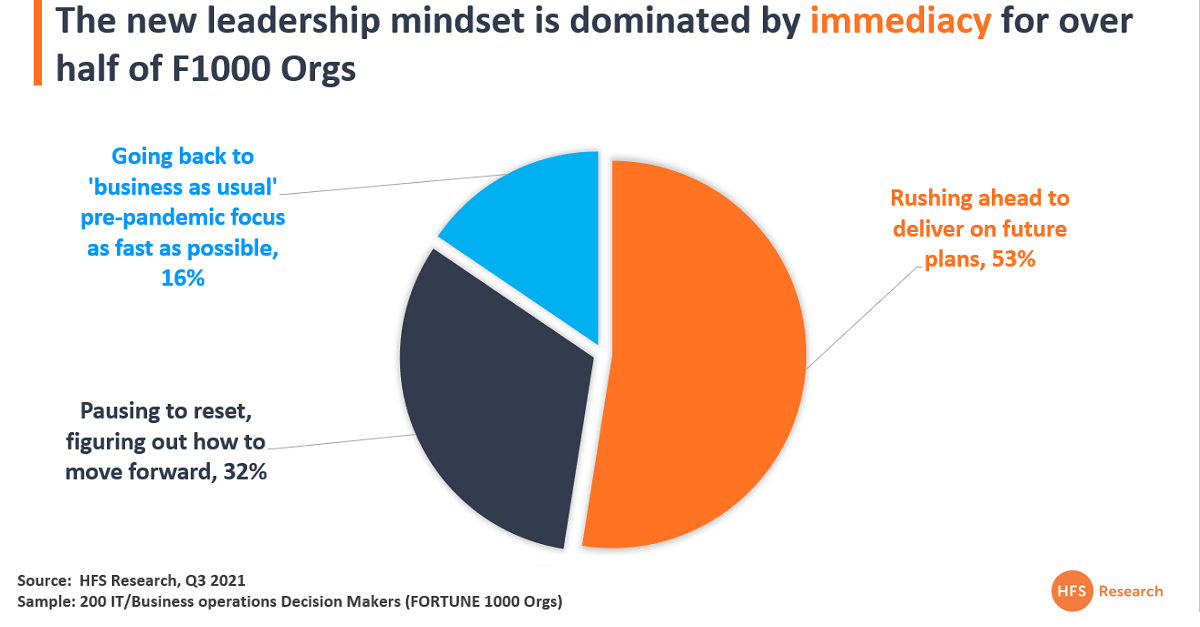New insights by HFS Research from FORTUNE 1000 leaders provide the context of how we have to reimagine the automation narrative. It is not about the myopic view of one bot for every employee or bold claims of progressing toward the autonomous enterprise. It’s about delivering immediate outcomes by designing workflows that take the RPA value out of the back office, where most RPA has been buried, and aligns its capabilities with helping the immediate commercial needs for the enterprise. The need to create immediate solutions with the digital hyperscaler platforms is now far greater than ERP suites, as that is where the hyperconnected business environment operates, as opposed to the traditional back office.
RPA impacts when it helps enterprises function effectively in new virtual customer and supplier environments
Over half of organizations are realizing that it requires rapid investments in process innovation to be effective in virtual environments. Before and during the pandemic, organizations that deployed RPA as a band-aid on badly designed or even broken processes were found badly wanting. Firstly, scaling fragile processes with RPA fixes is a huge challenge – they are brittle, and usually results in perpetuating a legacy environment. Secondly, RPA can have much more impact when it is deployed to bridge existing commercial systems with digital platforms that are essential for survival.
The RPA fraternity has reacted to this by accelerating tie ups with the Hyperscalers. The most recent example is Blue Prism (see news) who significantly expanded capabilities across the AWS ecosystem. However, what is urgently needed are proof points of how we are managing the new complexity of cloud native deployments. If applications or processes are running on containers, the interdependencies and consequently the reasons for failure increase exponentially.
As our current in-progress study of the automation focus of the FORTUNE 1000 is already revealing, the majority of automation investments enterprises are making are with the digital platform giants (75%). Only half of them still keep faith in ERP, while even less are focused on workflow suites and the RPA platforms themselves. Hence, hooking up with AWS is a masterstroke as it dominates so much of the commercial supply chain in the virtual economy:
The onus shifts from fluffy “strategy” to immediate need fulfillment
Addressing immediate critical needs at the business and supply chain end is happening… when you get into the whole commerce space the needs are immediate. Like how does a consumer products firm take data from legacy supply chain systems into an AWS environment… not the sort of thing you can solve overnight. You literally can’t operate seamlessly in the virtual economy if you don’t have the tools to link the old with the new, and RPA must be part of the toolbox to make immediate impact with the suppliers and customers which are the lifeblood for survival in a world where supply chains are falling apart at the seams, customer needs are immediate and stitching together processes from the front to the back office is the only way to function in today’s hyperconnected markets. As this new data shows us, more than half of today’s F1000 organizations are under intense pressure to implement new capabilities to take them into the future, as opposed to clinging on to the past:
Bottom-line: Automation is not a strategy it’s the native discipline to keep the wheels on as you rush to the future
Organizations are gearing up to drive fundamental operational change. To stay relevant in the virtual world, application and processes must be designed in and run on the cloud. This requires not only a broader ecosystem of cloud native capabilities but a new mindset and culture of running operations. It is literally about operationalizing the OneOffice by driving change that finally delivers on overcoming the organizational silos and experience-led outcomes. Yet, we can only get there by converging IT and business operations and by leveraging IT and business automation
Posted in : intelligent-automation, OneOffice, Robotic Process Automation







